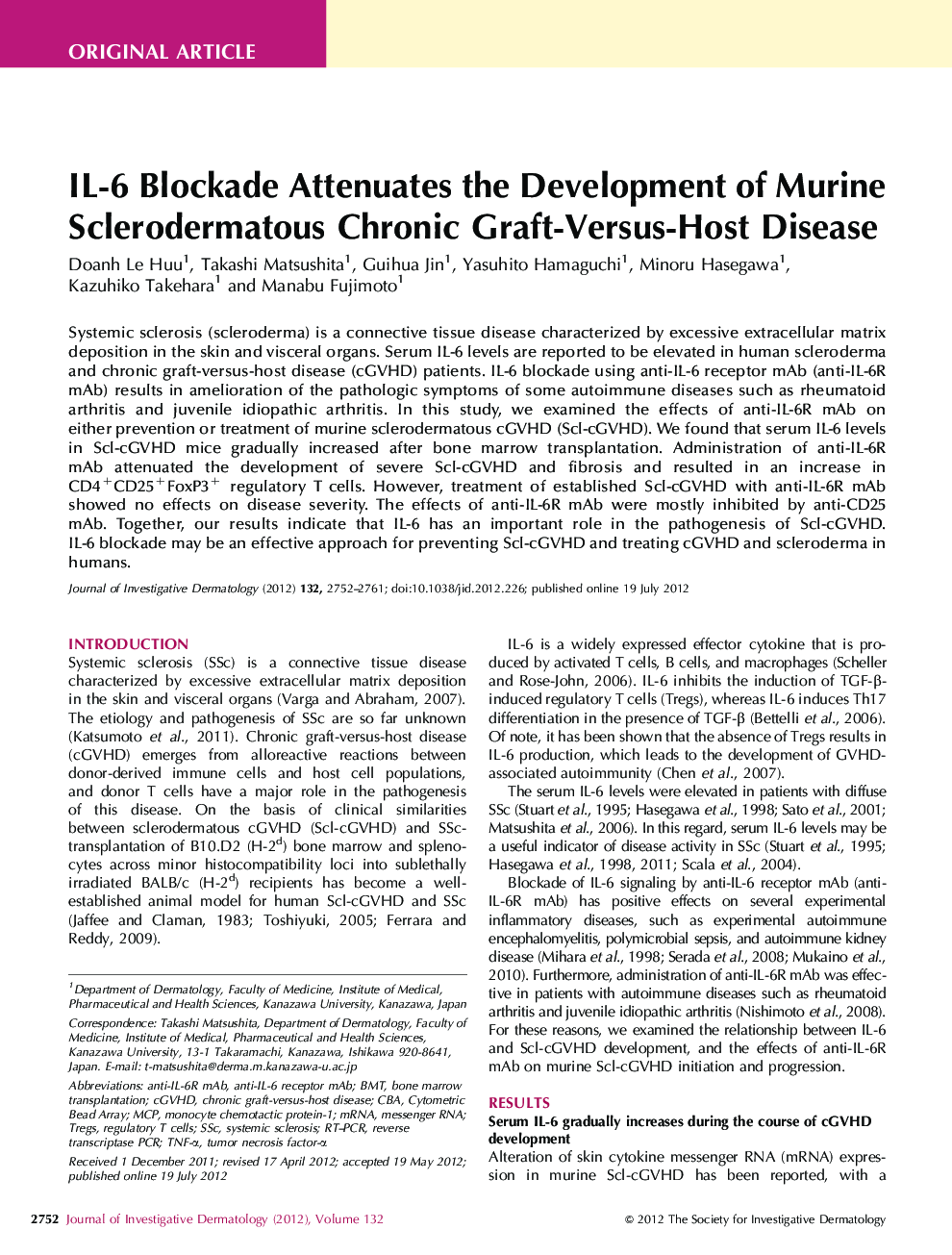| Article ID | Journal | Published Year | Pages | File Type |
|---|---|---|---|---|
| 6077891 | Journal of Investigative Dermatology | 2012 | 11 Pages |
Abstract
Systemic sclerosis (scleroderma) is a connective tissue disease characterized by excessive extracellular matrix deposition in the skin and visceral organs. Serum IL-6 levels are reported to be elevated in human scleroderma and chronic graft-versus-host disease (cGVHD) patients. IL-6 blockade using anti-IL-6 receptor mAb (anti-IL-6R mAb) results in amelioration of the pathologic symptoms of some autoimmune diseases such as rheumatoid arthritis and juvenile idiopathic arthritis. In this study, we examined the effects of anti-IL-6R mAb on either prevention or treatment of murine sclerodermatous cGVHD (Scl-cGVHD). We found that serum IL-6 levels in Scl-cGVHD mice gradually increased after bone marrow transplantation. Administration of anti-IL-6R mAb attenuated the development of severe Scl-cGVHD and fibrosis and resulted in an increase in CD4+CD25+FoxP3+ regulatory T cells. However, treatment of established Scl-cGVHD with anti-IL-6R mAb showed no effects on disease severity. The effects of anti-IL-6R mAb were mostly inhibited by anti-CD25 mAb. Together, our results indicate that IL-6 has an important role in the pathogenesis of Scl-cGVHD. IL-6 blockade may be an effective approach for preventing Scl-cGVHD and treating cGVHD and scleroderma in humans.
Related Topics
Health Sciences
Medicine and Dentistry
Dermatology
Authors
Doanh Le Huu, Takashi Matsushita, Guihua Jin, Yasuhito Hamaguchi, Minoru Hasegawa, Kazuhiko Takehara, Manabu Fujimoto,
